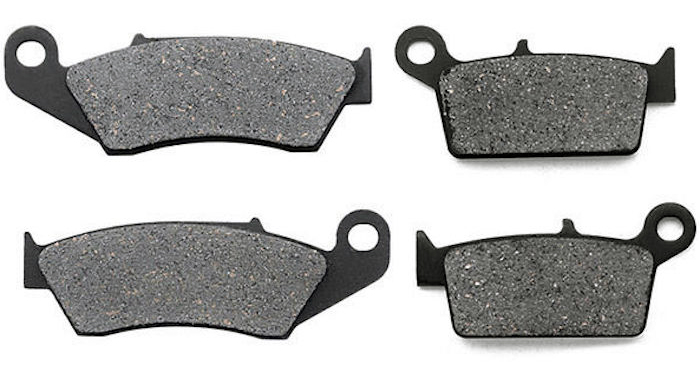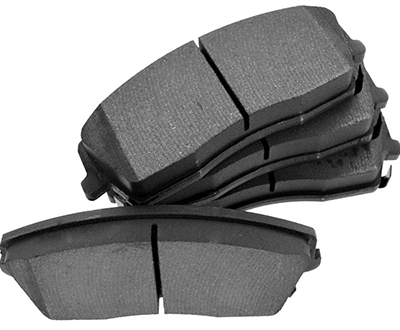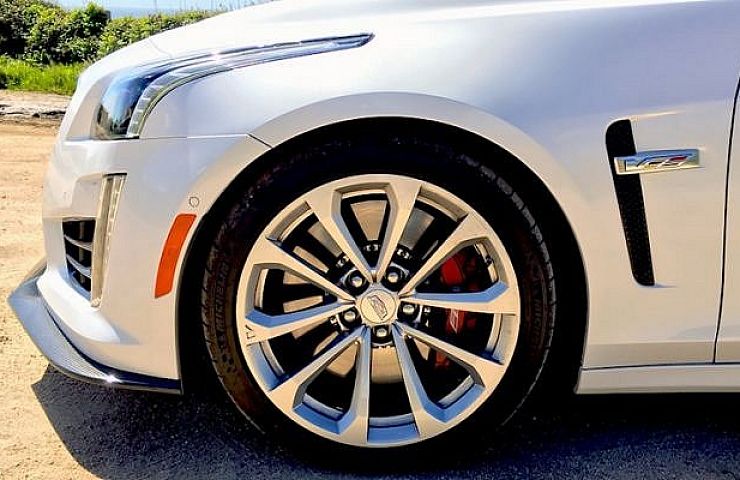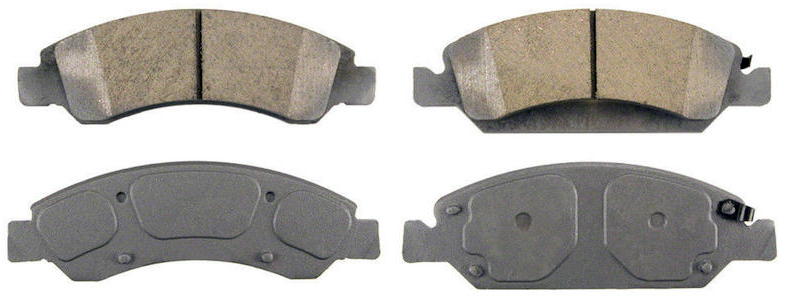Contents
The performance of a vehicle is not only about horsepower and handling. It’s also about how well your car stops. Therefore, good brake pads are essential. The key is to match the type of brake pad material to your driving needs.
When you step on the brake pedal, the pads clamp on the rotors—slowing your momentum. So, it’s essential to use the optimum pad with your brakes. Mismatched brake pads can overheat and reduce your stopping capabilities. This phenomenon, called “brake fade,” can be hazardous.
Consider which one of these three popular brake pads is best for you.
Organic Brake Pads

Pros:
- Inexpensive
- Quiet
- Great for daily driver usage
- Easy on brake rotors
Cons:
- Pad material is soft and makes a lot of dust
- Wears out quickly
- Most susceptible to brake fade
- Not ideal for aggressive driving or racing
Low- and Semi-Metallic Brake Pads

However, because semi-metallic brake pads are made of harder materials, they tend to cause accelerated wear of the brake rotors. Low-metallic brake pads are a good trade-off for better stopping power and brake disc wear in daily usage. Semi-metallic pads can be a good choice for racing.
Pros:
- Great stopping power
- Good heat transfer and better fade resistance
- Very durable and long-lasting
- Minimal price difference from organic brake pads
Cons:
- Noisy
- Low-metallic pad material creates a lot of dust
- Pad hardness can cause accelerated wear of brake rotors
- Need to be warmed up before optimal braking power is available
Carbon-Ceramic Pads
The newest types of brake pads are made up of ceramic fibers and high-temperature bonding agents with small amounts of copper fibers. Carbon-ceramic brake pads provide outstanding fade resistance, strong braking performance, and long life. In addition, they produce less dust.
This brake pad option is a significant step up from semi-metallic pads for a daily driver, but if you’re upgrading, it is recommended that the brake rotors also be upgraded. Ceramic pads are becoming the standard on many new cars sold today. They are more expensive than other pad types, but most enthusiasts believe they are worth the cost.
Pros:
- Lightweight pads mean less weight on a vehicle’s suspension
- Excellent fade resistance
- Great stopping power and very quiet
- Suitable for aggressive driving and occasional racing
Cons:
- More expensive






